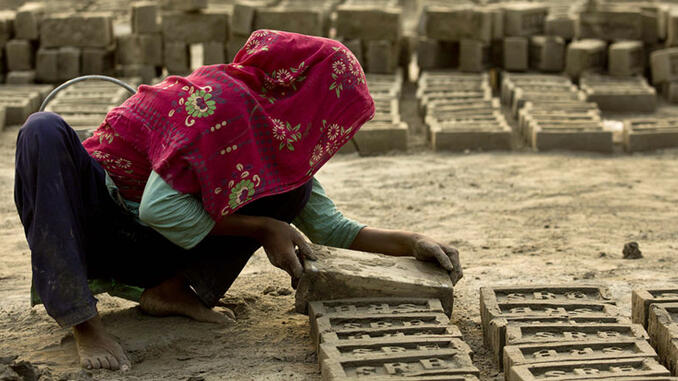
India’s rapid economic growth over the past few decades has lifted hundreds of millions of people out of poverty. In 1993 an estimated 45 percent of its more than 870 million people lived in poverty. By 2011, that number had fallen to 21 percent in a rapidly growing population. Today, with a population of 1.3 billion, India continues that trend. However, even with such progress, there are still about 270 million people living in poverty. Of that number, many millions have found themselves in modern-day slavery situations. In India, 1.4 percent of the total population fall into the definition of modern slavery. That is more than 18.3 million people, or half of the world’s estimated total population forced into slavery.
Modern slavery takes on a multitude of different forms and these include intergenerational bonded labor, forced child labor, commercial sexual exploitation, forced begging, forced recruitment into non-state armed groups, and forced marriage. All these forms of slavery can be found in India—from brick kilns, to brothels, and even to child soldiers.
Brick kiln employers, fueled by the demand of India’s massive real estate construction, prey on individuals and families that are in financial distress by offering temporary relief in the form of cash loans and the provision of food, shelter, and employment. The cost of food and shelter is deducted from their loan payments and if workers do not meet high production quotas, that cost is also deducted. These bonded contracts are extremely difficult to get out of and the victims effectively become slaves. “The agents who come to our villages spot the families in distress. They know when there has been an unforeseen expenditure and then offer the loans,” one victim explained a reporter. “They come to us when we have hit rock bottom and have no choice but to agree to their terms.”
Living conditions provided by the employers are squalid with little or no running water. The workers have very few possessions. Employers threaten the use of severe violence against individuals and their families if they try to escape or seek help.
Forced prostitution of women and children is also prevalent in India, and under similar conditions as the brick kiln employers. One victim explained to a non-government organization, “I was forced to work in the flesh trade… Can you imagine that I kept in a locked room for the whole day when I refused to work under pressure? It is because they had always threatened me and my family for physical violence and tortured.” A husband of another victim stated, “My wife is kept in the locked room and sexually harassed and being forced to work as a prostitute. She is physically punished whenever she refuse to have sex. My family is under death threat. We are also threatened of legal action against us.”
Despite a few high-profile raids over the past few years, the Indian government does not, as of yet, have the resources or the capacity to handle its slave problem. Well-intended labor laws mostly go unenforced. Corruption by local authorities complicit in slavery is often a barrier.
While there are strides being made to rehabilitate victims of modern slavery, resources need to be overhauled and better regulated. For instance, slavery victims freed under the age of 21 can be and are subjected to extended periods of court ordered custody in protective homes. This has the unintended and undesired effect of being another form of detainment, thus causing many victims to avoid becoming involved with the legal system.
Given the magnitude and severity of the problem, India is making some headway in the fight against modern slavery, but there is still a long way to go. Unlike western countries, India never had an industrial age to develop its labor laws and practices. As India races into modernity its bureaucracy is also having to adapt to the challenges this growth brings.
Distressingly, however, when attempts are made to educate the public about the severity of India’s modern slavery problem, the current government of Prime Minister Narendra Modi bristles in reaction. His government discourages attempts to show any negative realities of India for fear it will affect businesses and trade.
Recently a report was leaked to the Indian press showing the government’s effort to discredit reports about slavery. When the Walk Free Foundation and the United Nation’s International Labor Organization published reports on the global slavery problem which alluded to India, the government moved to have the reports discredited. The documents leaked to the press stated that the slavery reports have “enough potential to substantially harm India’s image and exports and impact its efforts to achieve Sustainable Development Goal 8.7.” Clearly India is stuck between the image of its current reality and the image it hopes to eventually achieve. This makes it absolutely necessary for the rest of the world to drive the point home to India that honesty in acknowledging its slavery problem is the best way moving forward.
